Appetite for success: How Zermatt Neo became a YouTube star through competitive eating
In CNA Lifestyle’s new series on popular YouTube content creators in Southeast Asia, we meet the Singaporean who turned his love for food into a career, one viral video at a time.
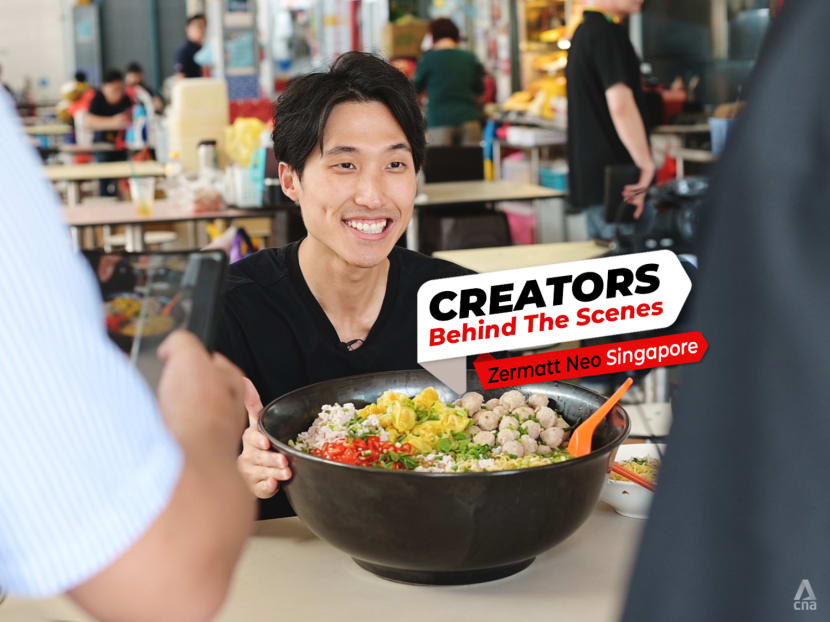
YouTube content creator and competitive eater Zermatt Neo from Singapore. (Photo: CNA/Joyee Koo)

This audio is generated by an AI tool.
From being the first to score a reservation at a popular, new eatery to standing in line for hours to get a foodie fix, there is no doubt eating out in food-crazy Singapore is a sport. And even among a nation of food lovers, Zermatt Neo stands out from the crowd for his ability to consume extremely large amounts of food at a time.
A competitive eater and content creator, he first shot to fame in 2016 by polishing off a 4kg plate of chicken rice (that’s 10 plates of rice and an entire chicken) in just 29 minutes.
In another viral YouTube video, which has over a million views, Neo chowed down almost 300 sticks of satay at Lau Pa Sat in 20 minutes. For these achievements and more, Neo is not only the reigning champion of Food League Singapore, but has also earned himself the title of Singapore’s strongest competitive eater.
“I think the reason why the chicken rice video went viral is because it is very relatable. Singaporeans know their chicken rice and they found it very intriguing that someone can eat 10 to 12 plates and still stay in shape,” observed Neo, who has over 350,000 subscribers on YouTube thanks to his ability to consume mind blowingly large portions of food within a short period of time.
“They wonder: ‘How is this guy able to do this?’”
Zermatt Neo is one of Singapore’s popular YouTubers, thanks to his eating exploits. The competitive eater reveals what goes on in the making of his videos.
A MODEST START
Before Neo became a popular content creator, competitive eating was for the most part an enjoyable weekend diversion. He was at that time a personal trainer while interning at the hospital to become a dietitian, so the eating challenges were mostly a way for him to enjoy some free food.
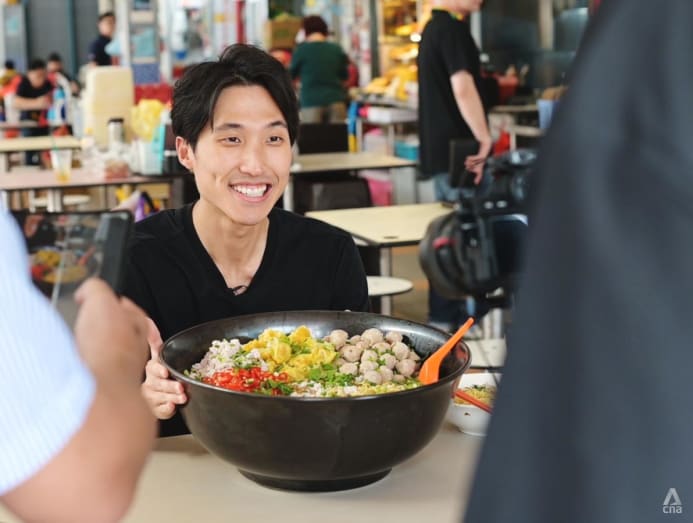
His first introduction to the world of competitive eating came in the form of a dare in 2013 where he was challenged to take on a wagyu burger challenge. (It would have cost S$80 if he failed.)
Neo, now 35, recalled: "I gathered a group of friends, all of whom were gym buddies. Out of the five of us, I was the only one who finished the challenge within 20 minutes, and I even beat the previous record by a significant margin. That is how I got started in competitive eating."
But while there was satisfaction in victory, it took Neo some time to decide to share his culinary escapades with a broader audience. “Despite finishing the challenge with ease, I did not know if this was the right thing to do. I felt very guilty putting that much calories in me in such a short time,” he confided.
It was only in 2015, when a personal training client offered to edit his footage for him that he began uploading food videos on an ad hoc basis.
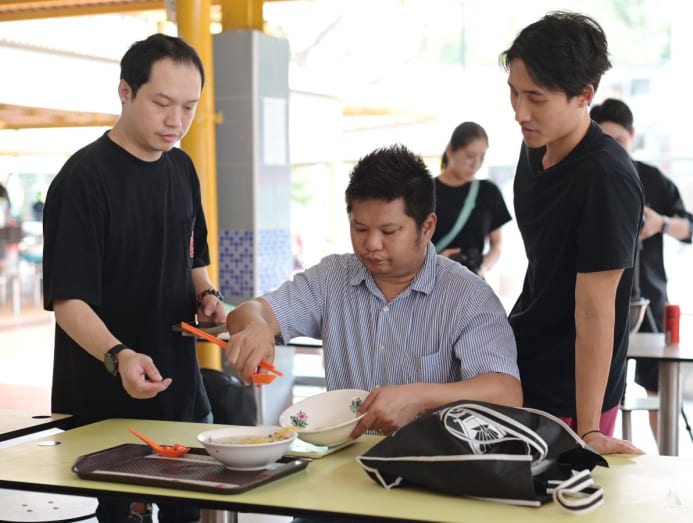
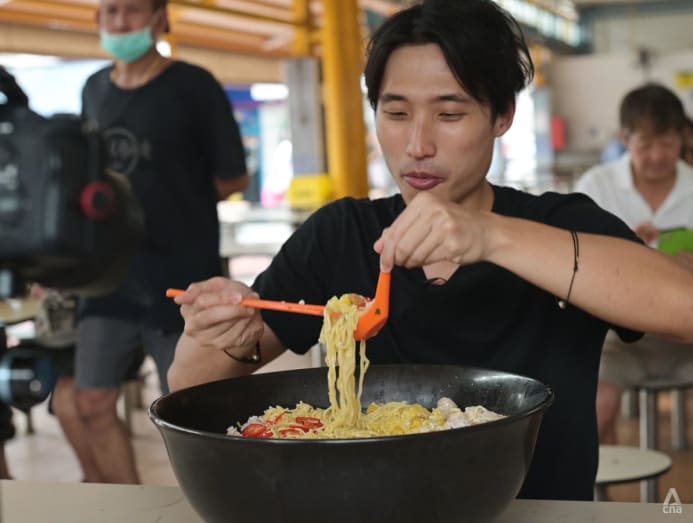
As these early videos gained traction, he began to enjoy the attention he was receiving. “The results are very addictive. Once you see people engaging with your content and they are hooked on your videos, you definitely want to do more,” he said.
Still, it took him another three years before he finally made the decision to move into competitive eating content creation full time. One of the reasons why he decided to take the plunge was when he began getting offers to be paid to dine at restaurants.
“I realised you can earn money not just from YouTube but from advertising for people or restaurants,” he said. “I did not want to approach it half-heartedly so I decided to go all-in and pursue content creation as a full-time gig.”
Even then, it was a hard slog for a few years before he achieved financial stability as a content creator. “When you first start, you do not see any substantial income for a while and the anxiety is definitely not fun,” he reflected. “Fortunately, my content is just me interacting in front of the camera.”
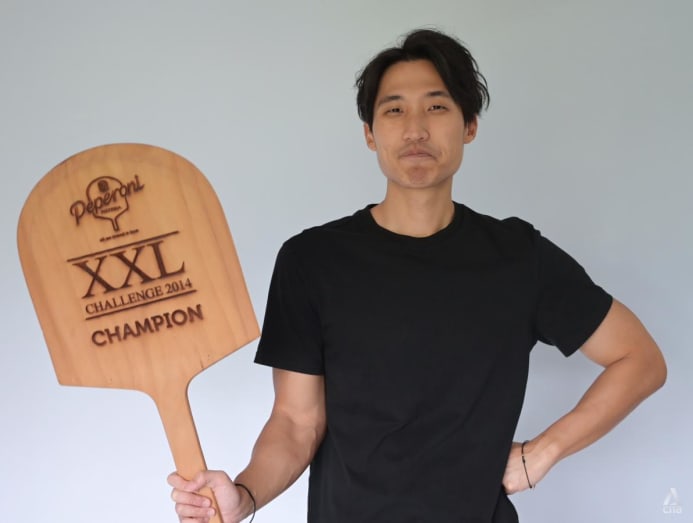
Today, he is a lot more financially “comfortable”, he said. Neo has not only amassed the necessary equipment for content creation, he has also built a team to work on creating and producing videos.
“I am very comfortable working with this bunch of people. It almost does not feel like I am working, it feels like I am hanging out with my friends,” he said.
More YouTube content creators in Southeast Asia:
THE INGREDIENTS FOR SUCCESS
For Neo, his profound love for food and eating – in particular local hawker fare – has become the bedrock of his content. This deep-seated passion resonated with his expanding audience, who were drawn to the captivating blend of competitive eating and storytelling that he offered.
“The food scene here is vibrant. Everyone uses the word melting pot, so I am going to use it as well to describe the combination of all the different cuisines you can find in Singapore. I believe there is still so much more to unpack for the hawker scene which is why we like to visit the hawkers,” said Neo.
In addition, he noted that there are not that many competitive eaters doing street food challenges, hence creating a niche for his channel. “It is a showcase of Singapore’s hawker scene to the rest of the world,” he said.
He also enjoys shining the spotlight on lesser known hawkers in order to offer them some much needed publicity to improve their business.
Neo recalled how he once filmed a food video at a char kway teow stall. “The day after I posted a video, there was a long queue at the stall that the owner had never experienced before. He kept selling out of food,” he said.
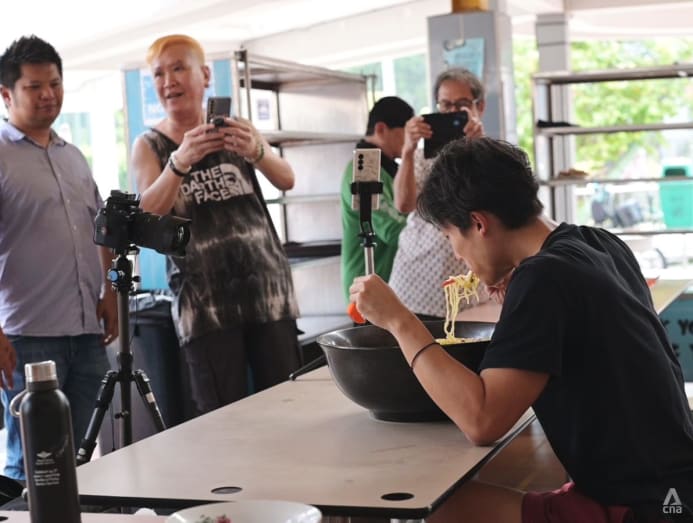
In another heartwarming moment, he recalled: “Recently we filmed a video of an aunty who sells fried bananas. She was struggling because very sadly, both her husband and her son passed away in the past six months. We did a video for her and people actually went out to support her. It was very fulfilling to see this happening.”
There are lighthearted moments too, since many of the hawkers he meets are not tech savvy and do not understand why he films himself eating such huge amounts of food in a single seating. “Sometimes I just say, ‘This is for my polytechnic project’,” he quipped.
PREPPING FOR THE GASTRONOMIC GAUNTLET
One question that frequently arises is how Neo prepares his body for the formidable eating challenges he undertakes. His strategy involves a delicate equilibrium of fasting and hydration.
"Before a shoot or an eating event, I typically embark on a short fast – usually around 20 to 24 hours of intermittent fasting. This helps keep my stomach relatively empty and reins in my appetite. I also consume a generous amount of warm water before the challenge," he said.
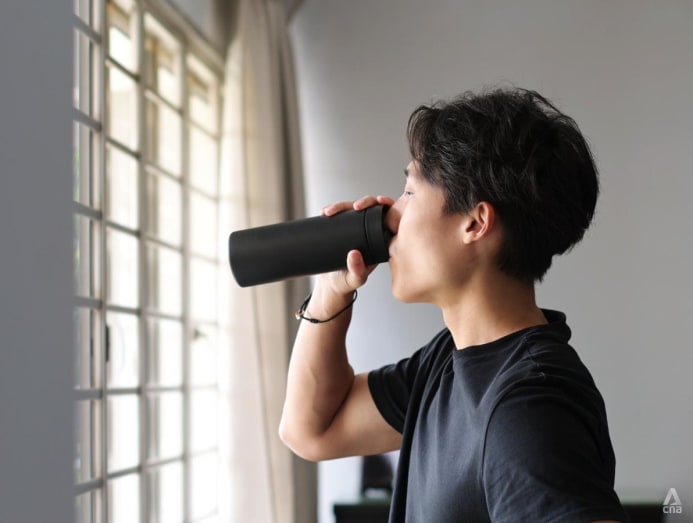
It also helps that he is ambidextrous and can use both hands efficiently. "This skill comes in handy during competitive eating contests, as it allows me to use one hand to grab food and the other to prepare water or other aids. Every second counts in these contests, so being fast and efficient is crucial,” he said.
More than just the pre-competition preparation, his background as a personal trainer and dietitian has played a pivotal role in helping him to stay healthy and trim despite consuming large amounts of food for his eating challenges.
“I do a lot of cardiovascular exercises during my rest days. My favourite is skipping and I can spend 1.5 hours to two hours in the gym, just to make sure I get those calories off,” he said.
He also keeps close track of the calories he consumes. Because of his strict, intermittent fasting diet, he can sometimes be on a huge caloric deficit where he eats just superfoods like blueberries, nuts, vegetables, eggs and tofu just to meet his nutritional needs.
Neo also noted that because he fasts, the amount of calories he consumes during a food challenge actually balances out his daily caloric intake as long as he incorporates cardio exercises.
“I have friends who are bodybuilders who need 7,000 to 8,000 calories a day to maintain their physique. I pretty much eat the amount of calories that I require over one or two days in one sitting hence I do not see it as food wastage,” he said.
However, Neo admitted that his work does affect his social life as he does not typically dine out with friends in between food shoots. “I have to be on a very responsible diet, in order to not just keep my physique, but to be responsible to my body. It is really about putting the right nutrients in me and taking care of myself during my days off.”
DEBUNKING MISCONCEPTIONS
One of the biggest occupational hazards he has to deal with is food poisoning, especially when he consumes large quantities of certain foods his body is not accustomed to. Once, he had to be hospitalised after completing an oyster omelette challenge where he gorged on about 400 oysters. “The food was not contaminated but my body was not accustomed to eating that many oysters at once,” he said.
In general, to avoid too many food mishaps, he sticks to cooked food for his challenges and has built up his tolerance for spicy food over the years to ensure he stays safe and healthy.
Another common misconception is that people often assume that competitive eaters induce vomiting after challenges. Neo said candidly that this does happen among some eaters, but this is not something he practises.
“Sometimes if I go beyond my threshold, it just happens. But my rule of thumb is that I do not induce – it just does not work that way for me. Instead, I rest for at least three days instead of doing back-to-back challenges like some eaters,” he said.
WHAT’S NEXT
After all, longevity is the name of the game for Neo. Highly competitive, he said: “Nobody trains to come in second place.”
Noting that the top ranked eaters are in their 40s and 50s, Neo reckoned he has a few more good years of competitive eating in him and plans to continue participating in contests.
In the longer term, his vision extends beyond just embarking on eating challenges. As he pondered his future, he mused: “Rather than eating so much, I might look into doing more travel vlogs where I can sample the different types of cuisine the world has to offer.”
His goal is to use food as a medium to connect and interact with people and cultures. “Food is something that connects people. When you visit a country, you can learn more about it through its cuisine. So food is definitely more than just about taste for me. It is a bridge to connect with different people and different countries.”










